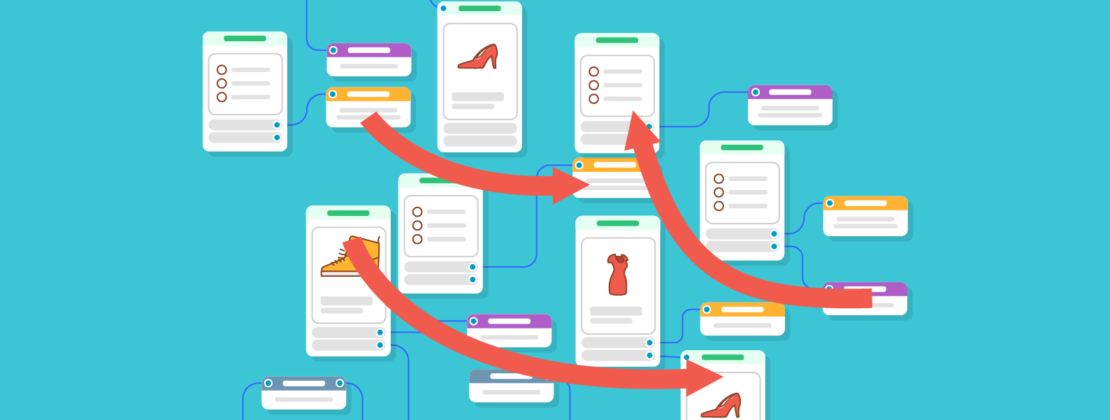Customer experience has been given center stage. As new competitors with fresh ideas emerge daily, you need powerful customer service to attract and retain consumers.
With the introduction of chatbots, excellence in customer service is no longer just a dream. Chatbots are available 24/7 and designed to assist customers with their every need. It comes as no surprise that the use of chatbots has been consistently increasing, with 1.4 billion people using them regularly.
However, there is more to chatbots than meets the eye. Simply putting them in motion won’t do the trick. You need an effective bot script that will guide the interaction in the right direction. The conversation needs to run smoothly and naturally. It should resemble the communication that people would have with customer agents.
Do you want to ensure that your chatbots deliver the best customer experience? Then, consider these steps when writing your chatbot script.
Content:
Define the best approach with the help of a customer persona
Your chatbot’s attitude should be based on your consumers. For a personalized experience, the script’s tone, style, and language should resonate with your target audience.
The method that writers and marketers use for content personalization is creating a buyer persona. A buyer persona embodies your target audience. Once you figure out your brand’s buyer persona and what they like, you can understand how you should speak to them.
To speed up this process, you can use HubSpot’s buyer persona generator.
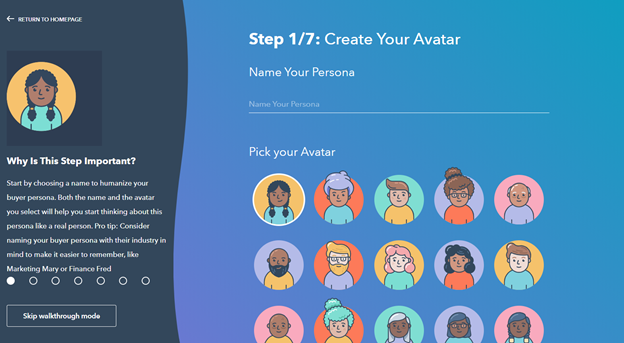
Create a personality for your bot
Wondering how to humanize a robot? Give it a personality. Move past the generic and dull conversation that consumers expect. Turn your chatbot into a character that people love to interact with.
Take Swelly as an example. Swelly is a friendly and helpful bot for Facebook Messenger.
When creating a unique personality for your bot, you should align it with your brand. Consistent branding — which is necessary to establish a recognizable brand identity — should be reflected in the chatbot experience.
If your customers are used to a quirky and funny brand personality, a bot with a formal style will throw them off. So, stay in character and give the bot script the same spark that your brand’s content has.
Start with a clear introduction
Customers should know with whom they are communicating. To avoid misunderstandings, clarify that there is a chatbot on the other side. Let’s look at a Telegram bot, Eddy Travels, as an example. The very first sentence clarifies that Eddy Travels is an AI assistant.

Lead in with a friendly introduction. Explain to the customer what the chatbot can help them with. You want your audience to understand the possibilities of this innovative customer service approach.
Chatbots are still a mystery to some people. Therefore, you want to have a friendly and helping tone that boosts consumers’ confidence to interact with your bot.
Here is an idea of how you can compose your first message:
“Hi [name]! Welcome to [name of the website]. My name is JennaBot. I can answer your questions, help you place an order, or check your order status.”
Provide instructions
After the introduction, the chatbot should provide guidelines. The customer needs to understand which options they have and how they can direct the conversation. Giving directions to consumers will help them think less about their next step. If they dwell on what to type, they might give up on the bot altogether. Ensure that they get clear guidelines to keep the conversation alive.
Check out how The World Health Organization’s (WHO) uses WhatsApp bots to give users clear options.
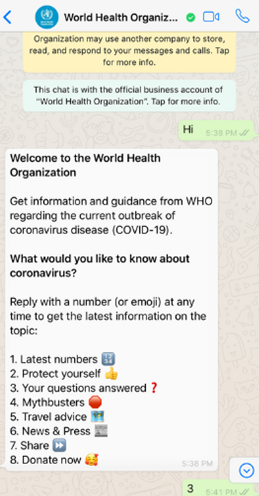
Aim for simple and concise dialogue
To mimic a real conversation, you need to keep your sentences short. Blocks of text are overwhelming and not appropriate for fast and efficient customer service.
Just take a look at how AccuWeather does it. Their chatbot packs all of the necessary information in concise sentences.
It is recommended that you keep your message from 60-90 characters. Cut any unnecessary phrases or extra words. Make simplicity your goal. If you need to give a lengthier answer, use bullet points to break up the text.
Another way to simplify the conversation is using conversational language.
Give your bot script the sense of a casual chat between friends. Turn your chatbot into a friendly acquaintance who is eager to help their new friend. Something like this:
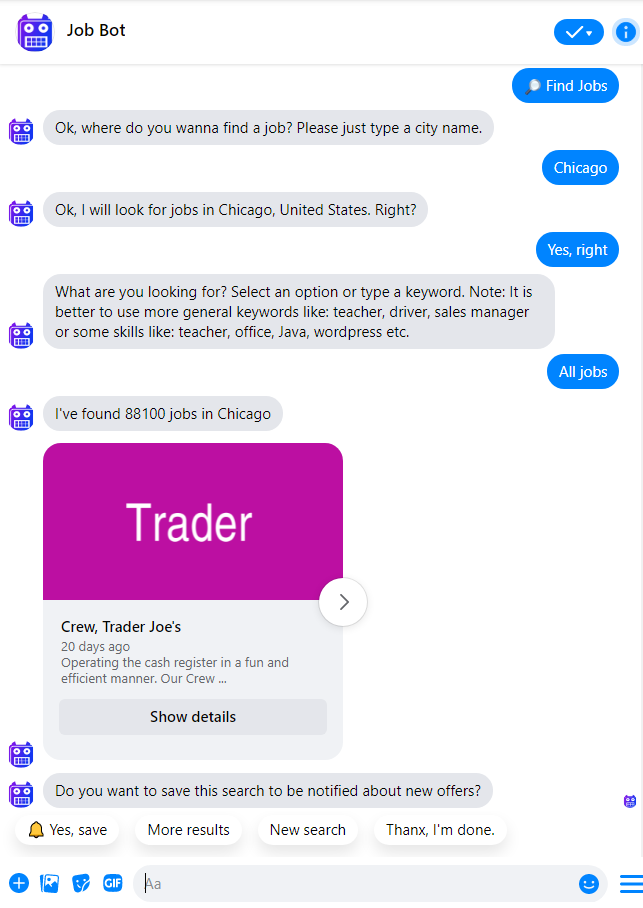
As you can tell, Job Bot keeps it simple with a conversational writing style.
How do I write in a conversational manner, you ask? Here are a few useful tips:
- use the first-person point of view for the bot;
- address the consumers directly;
- use active voice;
- add an appropriate amount of chit-chat.
And if you have an AI bot that allows users to type their questions, you need to work on the possible answers. Variations of a single question should come with a variety of answers. Sticking to a single answer format can break the natural flow of conversation. The more options you provide in the script, the more natural the bot will be.
Add a touch of emotion
Show consumers that their emotions matter. Imbed answers in your chatbot script that would be a natural response to certain situations. For example, let’s say that a customer complains about not receiving their order. These are some variations of a bot’s response:
- Oh no! I am so sorry to hear that! I will immediately check where the hold-up is. Please be so kind as to provide me with order details.
- Type in your order details for further information on your order status.
Imagine that you are frustrated about your missing order. Which response would make you feel understood?
In the following example, you’ll notice the excitement of Seattle Ballooning bot’s answer.
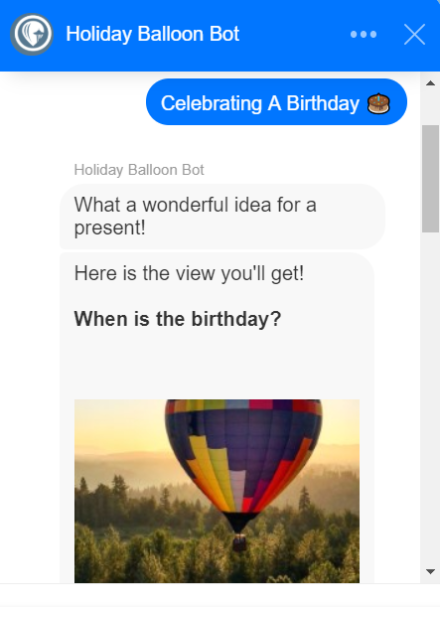
Be mindful of what kind of emotions consumers are experiencing in different scenarios. If you give your chabot users indifferent answers when they are angry or frustrated, the negative feelings will keep bubbling — and you don’t want that.
Make the last impression count
How you end the conversation is just as relevant as how you start it. Make sure that your bot leaves a good impression on the consumer. Leave the user with a “this was pleasant” thought after you wrap up.
A simple farewell in the form of “Thanks for getting in touch today — I appreciate your time” or “Don’t hesitate to ask any question at any time. I am always happy to help” will do the trick.
Round up the positive experience with an attentive goodbye.
Medium shared an article discussing the perfect chatbot exists, and they provided a great example:
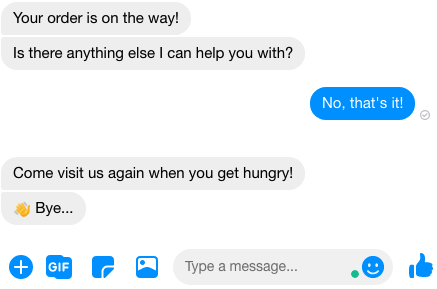
Edit and proofread
Before you finalize the chatbot script, make sure that there are no errors. Any grammar or spelling mistake can negatively affect the user’s perspective on your brand. Look for online writing services if you need any assistance.
Another pair of eyes is the best solution for editing and proofreading. Get an editor or writer to go through the bot script and point out inconsistencies and mistakes.
Final thoughts
A chatbot is a representative of your company. How it interacts with customers reflects your brand. Therefore, invest your time and effort into crafting an impeccable bot script. The steps mentioned above will help you get there.
Scriptwriting is a crucial aspect of a successful customer experience. You want to align the script with your target audience and brand. Lastly, don’t forget to add that conversational touch for natural and satisfying interaction.
